Measles, Mumps, and Rubella Vaccine (MMR)
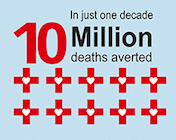 The measles, mumps, and rubella (MMR) vaccine is safe. The end. Phew, that was easy!
The measles, mumps, and rubella (MMR) vaccine is safe. The end. Phew, that was easy!
Of course I’m only kidding. That’s definitely not the end, not even close. There’s so much information out there about the MMR vaccine—good and bad, informative, and plenty of opinions—that it’s hard to know what to believe. I’m not going to give you my opinion on the vaccine (although I’m sure you could guess), that’s for another post. These are the facts.
MMR is a vaccine that will protect your child from these three serious and life-threatening viruses: measles, mumps, and rubella.
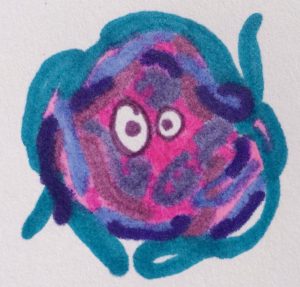 Measles, or rubeola, is a virus that attacks the throat and lungs and causes respiratory disease. It is extremely contagious, is spread through the air by a cough or sneeze, and can live on the surface of objects for up to two hours. Measles is so contagious that if one person has it, 90% of the people close to that person who have not been vaccinated will also become infected with the measles virus.2
Measles, or rubeola, is a virus that attacks the throat and lungs and causes respiratory disease. It is extremely contagious, is spread through the air by a cough or sneeze, and can live on the surface of objects for up to two hours. Measles is so contagious that if one person has it, 90% of the people close to that person who have not been vaccinated will also become infected with the measles virus.2
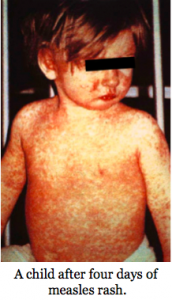 If your child should come down with the measles, about 1-2 weeks after infection with the virus you would notice a mild to moderate fever, cough, runny nose, red/watery eyes, and sore throat. A few days after those symptoms set in, you would notice tiny white spots with bluish-white centers in the inside of your child’s mouth (called Koplik’s spots). In another day or so, your child would begin to get a red or reddish-brown rash beginning at the hairline on the face, and spreading downward to the neck, tummy and back, arms, legs, and finally, feet. With the appearance of the rash, your child may spike a fever of 104*F or above. The fever and rash may last a few more days before fading away.
If your child should come down with the measles, about 1-2 weeks after infection with the virus you would notice a mild to moderate fever, cough, runny nose, red/watery eyes, and sore throat. A few days after those symptoms set in, you would notice tiny white spots with bluish-white centers in the inside of your child’s mouth (called Koplik’s spots). In another day or so, your child would begin to get a red or reddish-brown rash beginning at the hairline on the face, and spreading downward to the neck, tummy and back, arms, legs, and finally, feet. With the appearance of the rash, your child may spike a fever of 104*F or above. The fever and rash may last a few more days before fading away.
One out of ten children who come down with the measles get ear infections from the virus, and one out of twenty end up with pneumonia.2 About one out of 1,000 children get encephalitis (inflammation and swelling of the brain), which can lead to brain damage and/or seizures, and one or two out of 1,000 actually die from the measles.2
If you should contract the measles while pregnant, the virus can cause a miscarriage or cause you to give birth prematurely.
Before 1963, when the measles vaccine was introduced, nearly all children had contracted the measles by they time they were 15 years old.5 In the US, this caused about 450-500 deaths, 48,000 hospitalizations, 7,000 seizures, and left about 1,000 children with permanent brain damage or deafness.2
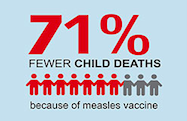 The incidence of measles in the US is very low due to the MMR vaccine. Today there are only about 60 cases reported each year in the US, most of which are due to traveling outside of the country.2 Should you plan on traveling outside of the US, vaccinating your child against the measles is especially important. Worldwide, there are estimated to be 20 million cases of the measles and 164,000 deaths from the virus each year, more than half of the deaths occurring in India.
The incidence of measles in the US is very low due to the MMR vaccine. Today there are only about 60 cases reported each year in the US, most of which are due to traveling outside of the country.2 Should you plan on traveling outside of the US, vaccinating your child against the measles is especially important. Worldwide, there are estimated to be 20 million cases of the measles and 164,000 deaths from the virus each year, more than half of the deaths occurring in India.
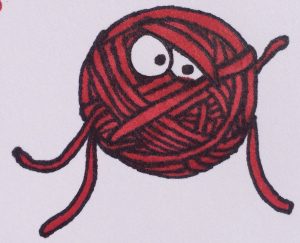 Mumps is a virus displaying the characteristic swollen cheeks and jaw. It is extremely contagious and passed through coughs, sneezes, and contaminated objects. Because up to half of those infected with mumps don’t show symptoms (or have very mild symptoms), this virus can be carried and spread like wildfire.
Mumps is a virus displaying the characteristic swollen cheeks and jaw. It is extremely contagious and passed through coughs, sneezes, and contaminated objects. Because up to half of those infected with mumps don’t show symptoms (or have very mild symptoms), this virus can be carried and spread like wildfire.
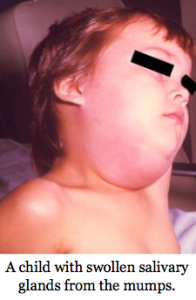 The mumps virus usually begins with a fever lasting for a few days, coupled with headache, muscle aches, tiredness, and loss of appetite. Following this, are swollen and tender salivary glands (under the ears on one or both sides of the neck)—the characteristic swollen cheeks and jaw.
The mumps virus usually begins with a fever lasting for a few days, coupled with headache, muscle aches, tiredness, and loss of appetite. Following this, are swollen and tender salivary glands (under the ears on one or both sides of the neck)—the characteristic swollen cheeks and jaw.
(Learn about the mumps pickle test, here.)
If your child contracts a mild case of the mumps, he would most likely recover in a week or two. There is no treatment for the mumps, and you have to let it run it’s course. In serious cases, the mumps can cause complications such as:
- Inflammation of the testicles in males who have reached puberty. This is the most common complication, and rarely leads to fertility problems.2
- Inflammation of the brain and/or tissue covering the brain and spinal cord
- Inflammation of the ovaries and/or breasts in females who have reached puberty
- Deafness
As mentioned above, the mumps is EXTREMELY contagious. If your child remains unvaccinated and contracts the mumps, the CDC recommends keeping your child isolated from others for about a week after the swelling begins in your child’s face.
To prevent the spread of the mumps, teach children to wash their hands often, to not share eating and drinking utensils, and to cover their mouth when coughing and sneezing. Also, regularly clean objects such as toys, and minimize contact with those who are sick with the mumps.
Since most children have been vaccinated, the mumps is a rare disease in the US.2 However, there has been a recent rise in unvaccinated children in the US, leading to several outbreaks of the mumps. According to the CDC, in 2006 there were 6,584 cases of the mumps across several states, mostly occurring in college dormitories.2 And beginning in July 2009, a large mumps outbreak is occurring, stemming from a case with a boy traveling overseas, and currently involving more than 4,000 Americans.5
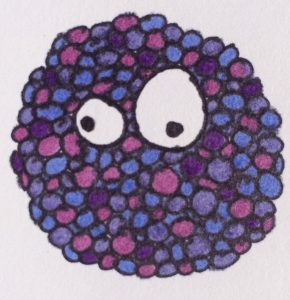 Rubella (German measles or 3-day measles) is a virus that is also spread by coughing and sneezing. Rubella mostly is an infection of the skin lymph nodes and causes a rash.
Rubella (German measles or 3-day measles) is a virus that is also spread by coughing and sneezing. Rubella mostly is an infection of the skin lymph nodes and causes a rash.
The infection begins with a few days of mild fever and swollen, tender lymph nodes, usually in the back of the neck or behind the ears, followed by a rash that begins on the face and spreads downward. The rash, which tends to look like many common childhood rashes, comes as pink or red spots, which might merge to form evenly-colored patches and tends to last for about three days. It may also be itchy. Once the rash clears, the skin sometimes sheds in fine flakes, and the lymph nodes may remain swollen for a week or more.
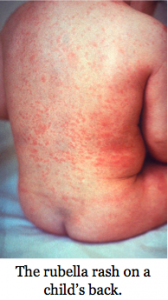 Along with the symptoms mentioned above, OLDER children who contract rubella may have a headache, loss of appetite, mild inflammation of the eyes, a stuffy or runny nose, swollen lymph nodes in other parts of the body, and pain and swelling in the joints (especially in young women), that may last for a few weeks.
Along with the symptoms mentioned above, OLDER children who contract rubella may have a headache, loss of appetite, mild inflammation of the eyes, a stuffy or runny nose, swollen lymph nodes in other parts of the body, and pain and swelling in the joints (especially in young women), that may last for a few weeks.
Rubella is typically mild in kids, who often can be cared for at home. Just make sure that if your child become infected and sick with rubella, to monitor your child’s fever and call the doctor should it climb too high or if your child appears to be getting sicker than the mild symptoms listed above.
It is also common to show no symptoms when infected with rubella, however it is important to understand that if infected and asymptomatic, your child may still be contagious to others and can still spread the virus.
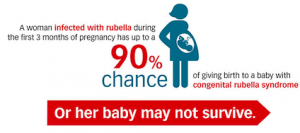 Should you be pregnant and think you may have come into contact with rubella, you need to contact your doctor immediately. Rubella is extremely dangerous to a developing baby and can cause miscarriage and congenital rubella syndrome. This may lead to potentially devastating birth defects in the unborn child.
Should you be pregnant and think you may have come into contact with rubella, you need to contact your doctor immediately. Rubella is extremely dangerous to a developing baby and can cause miscarriage and congenital rubella syndrome. This may lead to potentially devastating birth defects in the unborn child.
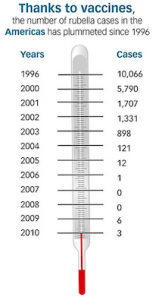 These babies are at risk for: growth retardation, malformations of the heart and eyes, deafness, mental retardation, liver and spleen damage, and bone marrow problems. Babies that are born with congenital rubella syndrome can spread rubella for up to a year, and may pass the virus through urine and fluids from the nose/throat to others who are not immunized.
These babies are at risk for: growth retardation, malformations of the heart and eyes, deafness, mental retardation, liver and spleen damage, and bone marrow problems. Babies that are born with congenital rubella syndrome can spread rubella for up to a year, and may pass the virus through urine and fluids from the nose/throat to others who are not immunized.
Due to the MMR vaccine, rubella and congenital rubella syndrome can be prevented. Before we had this vaccine, there were epidemics occurring about every 6-9 years in mostly kids between the ages of 5 and 9 years old, as well as many congenital cases of rubella.2
_______________________________________________________________________
Fortunately, getting all three of these diseases can be avoided. The MMR vaccine contains the three live, but very weakened viruses. And once the vaccine is injected into your child’s body, his immune system immediately learns what these viruses look like and how to attack them should they ever enter your child’s body again, almost always keeping your child disease free.
The MMR vaccine is one of the many recommended childhood vaccines. Nearly all states in the US require proof that a child has received MMR before starting school. Two doses of the vaccine are required for proper protection. Your child should be given his first dose somewhere between 12 and 15 months, and then again at 4 to 6 years of age.
The second dose of the vaccine may be given earlier than 4 years of age, but must be given at least 28 days following the first dose. The reason for an earlier second dose would be if your child is traveling outside of the US.
Most children who get the MMR vaccine have no problems, however some children have mild problems such as soreness at the place where the shot was given. Mild problems include:
- Fever (up to 1 person out of 6)
- Mild rash (about 1 person out of 20)
- Swelling of glands in the cheeks or neck (about 1 person out of 75), which occurs less often after the second dose.
- Temporary pain and stiffness in the joints, mostly in teenage or adult women (up to 1 out of 4)
In the case of the above problems, no treatment is needed, and the symptoms should go away in several days. With my daughter, I noticed some swelling of her cheeks and some general crankiness for about two to three days following the MMR vaccine. Now, this may be the biologist in me, but I was happy to see these signs as I knew that her body was making the proper response to the injection.
Of course, the MMR vaccine, like any medicine can cause serious problems, however the risk of causing serious harm or death is very small and much safer than getting measles, mumps, or rubella. These may include:
- Allergic reactions (very rare–less than 1 out of a million doses)
- Febrile seizures—long-term seizures (jerking or staring) caused by fever (about 1 out of 3,000 doses)
- Temporary low platelet count, which can cause a bleeding disorder (about 1 out of 30,000 doses)
- Several other severe problems have been reported after a child gets MMR vaccine, including: deafness, coma, or lowered consciousness, and permanent brain damage. However, these are so rare that it is hard to tell whether they are caused by the vaccine.
**Studies have shown that 3,000 to 4,000 children who are vaccinated with MMR have a small increased risk for febrile seizures. These are seizures brought on by fever. This risk seems to be higher in children under seven years old and may occur approximately 8-14 days after vaccination when compared to children who have not been vaccinated with MMR.2**
Children that have febrile seizures generally have a full recovery with no further seizures or problems. About a third of the 2%-5% children that get these seizures will have a seizure in the future.2
**Another study suggests that children who have these fever-related seizures shortly after vaccination with MMR may have just been more prone to seizure in the first place.2**
Whether it’s the vaccine or not that causes the seizure, it’s important to understand that febrile seizures are a response to a fever. Vaccines may create fevers, just as diseases may create fevers.
To better understand what a febrile seizure is, the National Institute of Neurological Disorders and Stroke (NINDS) of the National Institutes of Health (NIH) has a great site, here.
_______________________________________________________________________
When my child went in for her one year vaccines she got the MMR vaccine as well as the varicella (chicken pox) vaccine. It is recommended by the Advisory Committee on Immunization Practices (ACIP) that your child receive the MMR and the varicella vaccine in the same visit. There is also a combination vaccine called MMRV, that combines these two vaccines into one, which is also an acceptable way to vaccinate your child. All four of these viral vaccines may be combined with no risk to the your child’s body making the proper immune response to each disease.
According to the CDC, there is no published scientific evidence that shows that separating these four vaccines into four different shots will benefit the immune system in any way.2 No country in the world recommends giving the vaccines separately.
The MMRV vaccine is great because it results in fewer injections, however there is a higher risk for fever and febrile seizures than the MMR shot plus the varicella shot. The risk is so small, that it’s just approximately one extra febrile seizure for every 2,300-2,600 MMRV vaccine doses when compared to MMR, alone.2 And it’s important to note that there are no studies showing an increased risk after the varicella injection, alone.2
The risk of febrile seizures is still very low for both MMR and MMRV, and usually only occurs after the first dose of either injection in children under the age of four. The second doses of MMR and varicella are due between 15 months and 12 years, but recommended between 4 and 6 years of age. It is also recommended that your child be given MMRV for the second dose due to the benefit of fewer injections and a close to nonexistent febrile seizure instance.
Why would you not give your child the MMR vaccine? If your child has had an allergy to the first dose of the MMR vaccine, do not complete the series. Also, children with severe allergies to the antibiotic neomycin (MMR contains a tiny amount of neomycin), or if he has a weakened immune system due to certain cancers and/or cancer treatment, HIV, steroid medicines, or other medicines that suppress the immune system, he should not get the vaccine. If your child is ill with something more severe than a cold or has a fever, you should reschedule their vaccinations until after they are recovered. Also, if your child has recently received blood, platelets, other blood products (including gamma globulin), or has a low platelet count, you should wait on the MMR until advised by the doctor.
If you have a personal family history of seizures, explain this to your doctor before giving your child the MMRV injection. Your child may need to be vaccinated with MMR and varicella separately, in this case.
What to do if your child has a serious reaction to a vaccine.
If you are pregnant and have not been vaccinated with the MMR vaccine, please wait until after giving birth to get the vaccine. It is also important to wait about a month after getting the vaccine to get pregnant. This is due to the severity of these diseases to the unborn child, including congenital rubella syndrome.
There is always the concern that MMR could cause health problems for your child. Many Americans are concerned that the MMR vaccine in particular is linked to disease in children. This concern grew when a study published by Dr. Andrew Wakefield in 1998 suggested that MMR shares an elevated risk for autism and inflammatory bowel disease. This particular study was found to be fraudulent and was discredited, his work deemed as “the most damaging medical hoax of the last 100 years”. Dr. Andrew Wakefield is no longer allowed to practice medicine in the UK and is considered no longer a member of the scientific community.
There is no proof that the link between MMR and these particular diseases exists.
Many studies have been conducted which show there is no link between autism and the MMR vaccine. ** One such study occurred in 2002 by the Danish Medical Research Council along with the CDC. This particular study followed more than 500,000 children over 7 years to see if there was a link between the MMR vaccine and the appearance of autism. No connection between the two was found. (The article can be found here)**
Often times the signs of autism appear around the time that a child gets vaccinated with MMR, and the connection is purely coincidental. In 2004, the Institute of Medicine reported that no link exists between the MMR vaccine and autism, as well as no link between autism and vaccines that contain thimerosal as a preservative.2
The experts in vaccine safety—those at the CDC and at the American Academy of Pediatrics—agree that the MMR vaccine is not the reason for the increase in the numbers of children who fall into the autism spectrum.
With no link to autism or inflammatory bowel disease and relatively low possible side effects, the benefits of the MMR vaccine are outstanding.
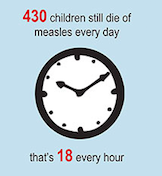 Remember, many of us have never seen cases of these horrible diseases, and it’s easy to underestimate how serious they can be.
Remember, many of us have never seen cases of these horrible diseases, and it’s easy to underestimate how serious they can be.
- Medline Plus. U.S. National Library of Medicine. www.nlm.nih.gov
- Centers for Disease Control and Prevention (CDC). www.cdc.gov
- National Institutes of Health. www.nih.gov
- Kids Health. Nemours. www.kidshealth.org
- The history of Vaccines. www.historyofvaccines.org
- National Institute of Neurological Disorders and Stroke. www.ninds.nih.gov
All photos courtesy of the CDC. www.cdc.gov
** This symbol indicates a study.
4 thoughts on “Measles, Mumps, and Rubella Vaccine (MMR)”
Comments are closed.


Thanks for sharing. 🙂 I’m sorry he had to go through these symptoms that are semi-common with MMR. It’s a live vaccine so symptoms from the viral particles are more common, but the protection from the vaccine is awesome. Glad you went with your instincts and got your son vaccinated. He will thank you someday!
thank you so much for all of the scientific information! Is very refreshing to see details from an actual immunologist, and not from a “wellness specialist” or “expert mother researcher” lol.
My son is four, almost 5, and has mild autism. It is difficult to be on Facebook in autism support groups, for the strong majority of autism moms are anti-vaccination. They frequently post links to anecdotes and conspiracy websites, and are ESPECIALLY against the MMR. So…enter this past summer. Time to register him for Transitional Kinder (post pre-school, not quite old enough for kinder, offered at all elementary schools in our district). The ONE vaccine he still needed was his MMRV.
I have to admit, I was very nervous. I was told by autism mommies that he’d regress and lose language. Maybe even get seizures. I hesitantly went ahead with the vaccine. All seemed well…then 10 days later…
High fever out of nowhere! 103° and I couldn’t really get it lower than 99° even with Tylenol AND Motrin. He had a stuffy nose, but I took him to the doctor and he didn’t see any ear infection, sinus infection, etc. the fever hung around for 3 days.
On the 13th day, I noticed a rash behind his ears. I thought i was imagining things, but then my husband, the most IMPERCEPTIVE person alive lol, noticed it and pointed it out. Sure enough, it was spreading behind his neck, jawline, chest, back, and thighs. It doesn’t seem to be bothering him at all. I do see him occasional scratch behind his ear at it, but no fever. Still a little stuffy.
Despite the fact that he’s part of the 5% who got a rash and fever as a reaction from the MMR, I still so far have zero regrets of getting it done. I’d rather him have these two things than the actual
Measles! Now, knock on wood, hopefully we don’t see any regressions in any areas down the line. But I guess in the grand scheme of things, I’d rather have a regression, than have him contract a preventable disease. 🙂
Sorry this took me so long to respond!
I don’t think it should make a bit of different as far as your son’s safety is concerned. Please don’t beat yourself up over this!
There was a CDC study back in 2010 that concluded that adverse effects from a third dose of MMR is the same as those of the second dose.
A similar thing happened to me. The nurse told me that my daughter had missed a dose of HiB (however I was sure she had gotten it), so I went ahead and had her give it to my daughter again. Well, turns out she got an extra dose. The nurse was wrong, and it had just been written incorrectly in her chart. I figured it would’t hurt to just get her another dose, but still, doctors and nurses can and do mess up. I bet it happens a lot. So you are not alone in this! Here’s a handy sheet you can print out and keep track of the vaccines: http://www.cdc.gov/vaccines/parents/downloads/milestones-tracker.pdf
I recommend keeping track, yourself. It’s really the only way you can be sure your child is getting the correct vaccines at the correct times–not too many and not too few!
My son just got vaccinated with MMR for the 3rd time. This was by accident of course as I didn’t realize( or had forgotten) he had previously had the second dose through our travel clinic when he was 2. I feel terrible about this as I should have been more aware of this and I am equally angered that this wasn’t noticed on his file by the nurse. Do you see any dangers in receiving this vaccine a 3rd time?